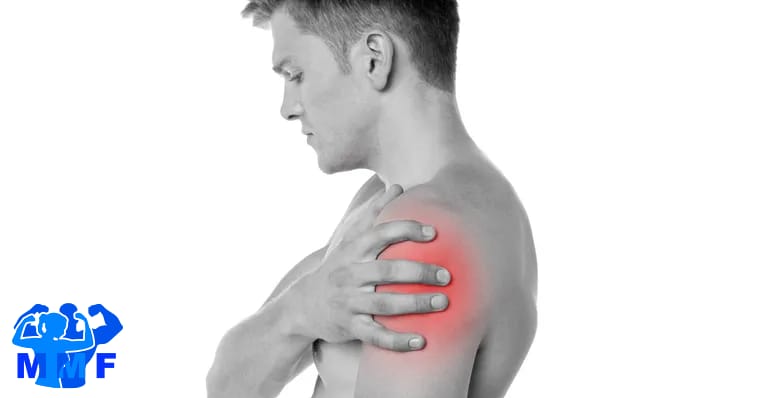If you’re experiencing shoulder pain, you may have a torn labrum. Torn labrums are a common cause of shoulder pain and can be difficult to diagnose. This blog post will explore the symptoms, causes, and treatments for a torn labrum so that you can get the help you need to feel better. Read on to learn more about shoulder pain, and what you can do if you suspect a torn labrum.
1. Introduction to Shoulder Pain
Shoulder pain can be a sign of many different issues, and one of them could be a torn labrum. The labrum is a type of cartilage in the shoulder that helps keep the bones in place and provides stability to the joint. It can become injured if you experience a sudden or forceful movement, or if you have an underlying condition. If you have shoulder pain, it is important to see a doctor so that they can determine if a torn labrum may be the cause.
2. What is a Labrum Tear?
The labrum is a ring of cartilage that surrounds the shoulder joint. A tear in the labrum is called a labral tear. A labral tear can cause pain and decreased range of motion in the shoulder. It can also cause clicking or grinding sounds when the shoulder is moved. If you have shoulder pain, it’s possible that you have a torn labrum. To diagnose a labral tear, your doctor may perform an MRI or CT scan to look for signs of damage. If a tear is found, your doctor may recommend physical therapy or surgery to repair it.
If you think you may have a labral tear, it’s important to talk to your doctor about your symptoms and get the proper diagnosis and treatment.
3. Causes of Labrum Tears
Shoulder pain can be caused by a number of different issues, but one possibility is a torn labrum. The labrum is a cuff of cartilage that lines the shoulder socket and helps keep the head of your humerus (upper arm bone) in place. When the labrum is torn, it can cause pain and difficulty with movement in the shoulder. There are a few common signs that you may have a torn labrum. The most common symptom is pain in the front or side of your shoulder when you move your arm. This pain may also be felt in the back of your shoulder, or down your arm. You may also experience weakness in your shoulder when trying to lift objects, or difficulty with overhead activities.
If you think you may have a torn labrum, it’s important to see your doctor for an evaluation. Your doctor will do a physical exam and ask you questions about your symptoms. They may also order imaging tests such as an X-ray, MRI, or CT scan to check for a labral tear. Treatment for a torn labrum may involve physical therapy, medications, or surgery.
4. Symptoms of a Torn Labrum
A torn labrum is a common cause of shoulder pain. The labrum is a band of cartilage that surrounds the shoulder socket, helping to keep the ball of the joint in place. If the labrum is torn, it can cause shoulder pain, instability, and decreased range of motion. Symptoms of a torn labrum can include: • Pain in the shoulder or upper arm that is worse with movement or overhead activities.
• Popping or clicking noises when moving the shoulder joint. • A feeling of instability or a sensation of the shoulder “giving out” during certain activities. • Decreased range of motion in the shoulder joint.
• Weakness in the arm or shoulder muscles. If you are experiencing any of these symptoms, you should seek medical attention. Your doctor may recommend imaging tests such as an X-ray or MRI to diagnose a torn labrum. Treatment options may include physical therapy, rest, and activity modification. In some cases, surgery may be necessary to repair the labrum.
5. Diagnosing a Torn Labrum
If you have shoulder pain, it’s possible that you have a torn labrum. This is a cartilage ring that helps keep your shoulder joint stable. Your doctor may diagnose a torn labrum with an X-ray, MRI scan, or physical examination. If your doctor suspects a torn labrum, they may use an MRI scan to get a better look at the shoulder joint. The MRI scan will show any damage or tears in the labrum. Your doctor may also use an X-ray to look for signs of arthritis or other joint damage.
During the physical examination, your doctor may press on the shoulder joint to check for tenderness and range of motion. They may also test the strength of your shoulder muscles to see how well they are working.
If your doctor finds that you have a torn labrum, they will recommend treatment options to help relieve your pain. Treatment options may include physical therapy, steroid injections, or surgery.
6. Treatment Options for a Torn Labrum
A torn labrum can be treated in a few different ways. Depending on the severity of the tear, some people may find relief without surgery. Rest and Physical Therapy – Resting the shoulder can help it heal and physical therapy can help strengthen the muscles around the joint. Exercises will help improve range of motion and reduce pain.
Corticosteroid Injections – Corticosteroid injections can reduce inflammation and pain. They may be used in combination with physical therapy for optimal results.
Surgery – If the tear is severe, surgery may be necessary to repair the torn labrum. During surgery, the labrum is reattached to the shoulder socket. This helps keep the shoulder joint stable and may reduce pain. After surgery, physical therapy will be needed to help with recovery.
7. Managing Shoulder Pain Caused by a Torn Labrum
The shoulder is a complex joint made up of several muscles, ligaments, and tendons. A labrum is a ring of cartilage that helps to stabilize the shoulder joint. When the labrum is torn, it can cause shoulder pain and instability. If you are experiencing shoulder pain and instability, it could be a sign that you have a torn labrum. The most common symptom of a torn labrum is aching or sharp pain in the shoulder when you move your arm. You may also feel a clicking or popping sensation when you move your arm. If the tear is severe, you may also experience weakness in your arm or shoulder.
If you think you may have a torn labrum, it is important to see a doctor for an accurate diagnosis. Your doctor will use imaging tests like X-rays or MRI scans to look for signs of a torn labrum. If the tests reveal a tear, your doctor may recommend physical therapy or surgery to repair the injury.
Taking care of a torn labrum is important to help reduce shoulder pain and improve your range of motion. Talk to your doctor about the best treatment options for you.
8. Prevention of Labrum Tears
A torn labrum is a common cause of shoulder pain. The labrum is a rim of cartilage that surrounds the shoulder joint and helps keep it stable. It also provides cushioning for the joint and helps prevent the bones from rubbing against each other. When the labrum is torn, it can cause pain, weakness, and instability in the shoulder. There are several common causes of a torn labrum, including injury, overuse, and degenerative conditions such as arthritis. If you have any of these causes of shoulder pain, it’s important to get it checked out by a doctor to determine if a torn labrum is the source of the problem.
Common symptoms of a torn labrum include shoulder pain that worsens with movement, stiffness, popping or grinding in the shoulder joint, and decreased range of motion. If you have any of these symptoms, you should see your doctor for an evaluation. Diagnosing a torn labrum typically involves an X-ray, MRI, or CT scan.
Treatment for a torn labrum often involves physical therapy to help strengthen and stabilize the shoulder joint. In some cases, surgery may be necessary to repair the tear. It’s important to follow your doctor’s advice and do any recommended exercises to help prevent further tears and keep your shoulder healthy.
9. Summary of Shoulder Pain and Torn Labrum
The shoulder joint is a complex structure made up of bones, ligaments, and muscles. It is a ball-and-socket joint, meaning that the round head of the humerus fits into a cup-shaped socket in the shoulder blade. This joint is held together by strong muscles and ligaments, which provide stability and allow for a wide range of motion. Sometimes, however, these structures can be injured or weakened. One common cause of shoulder pain is a torn labrum, which is the cartilage rim that surrounds the shoulder socket. This injury can be caused by repetitive overhead motions, like throwing a ball or lifting weights, or a traumatic event, like falling onto an outstretched arm. Symptoms of a torn labrum include shoulder pain, difficulty moving the shoulder, and a feeling of instability.
If you suspect you may have a torn labrum, it’s important to see your doctor right away. Your doctor will ask about your symptoms and do a physical examination to assess your range of motion and look for signs of instability. They may also order imaging tests like an X-ray or MRI to get a better look at the joint and confirm the diagnosis.
Treatment for a torn labrum usually involves rest and physical therapy to strengthen the surrounding muscles and improve range of motion. In some cases, surgery may be necessary to repair the labrum. Regardless of the treatment, it’s important to follow your doctor’s instructions to ensure a successful recovery.
References: Treatment of Shoulder Pain due to a Torn Labrum | Torn labrum | Shoulder Pain: Could It Be a Torn Labrum? | Torn Labrum |


